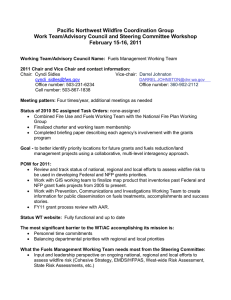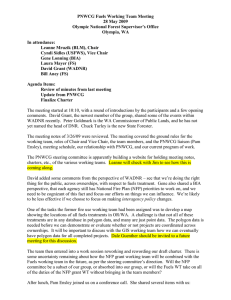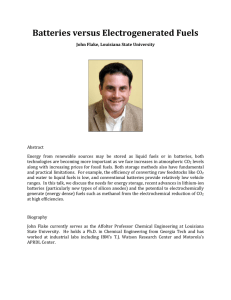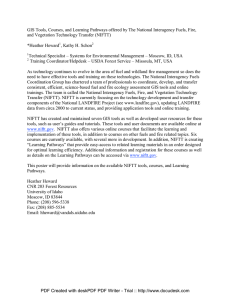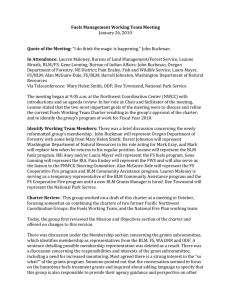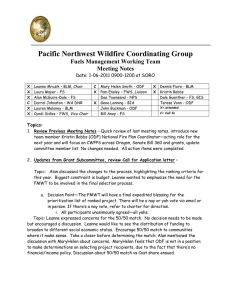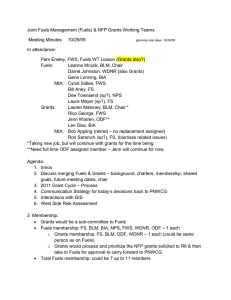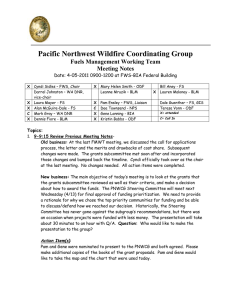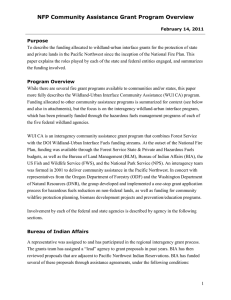Pacific Northwest Wildfire Coordination Group
advertisement
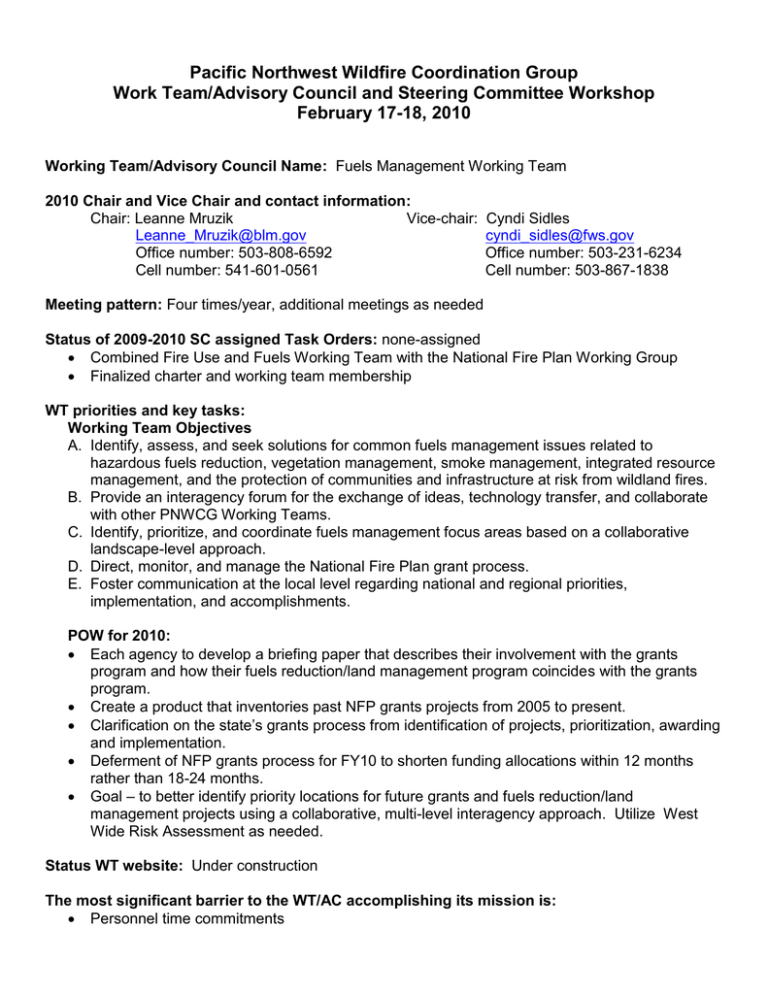
Pacific Northwest Wildfire Coordination Group Work Team/Advisory Council and Steering Committee Workshop February 17-18, 2010 Working Team/Advisory Council Name: Fuels Management Working Team 2010 Chair and Vice Chair and contact information: Chair: Leanne Mruzik Vice-chair: Leanne_Mruzik@blm.gov Office number: 503-808-6592 Cell number: 541-601-0561 Cyndi Sidles cyndi_sidles@fws.gov Office number: 503-231-6234 Cell number: 503-867-1838 Meeting pattern: Four times/year, additional meetings as needed Status of 2009-2010 SC assigned Task Orders: none-assigned Combined Fire Use and Fuels Working Team with the National Fire Plan Working Group Finalized charter and working team membership WT priorities and key tasks: Working Team Objectives A. Identify, assess, and seek solutions for common fuels management issues related to hazardous fuels reduction, vegetation management, smoke management, integrated resource management, and the protection of communities and infrastructure at risk from wildland fires. B. Provide an interagency forum for the exchange of ideas, technology transfer, and collaborate with other PNWCG Working Teams. C. Identify, prioritize, and coordinate fuels management focus areas based on a collaborative landscape-level approach. D. Direct, monitor, and manage the National Fire Plan grant process. E. Foster communication at the local level regarding national and regional priorities, implementation, and accomplishments. POW for 2010: Each agency to develop a briefing paper that describes their involvement with the grants program and how their fuels reduction/land management program coincides with the grants program. Create a product that inventories past NFP grants projects from 2005 to present. Clarification on the state’s grants process from identification of projects, prioritization, awarding and implementation. Deferment of NFP grants process for FY10 to shorten funding allocations within 12 months rather than 18-24 months. Goal – to better identify priority locations for future grants and fuels reduction/land management projects using a collaborative, multi-level interagency approach. Utilize West Wide Risk Assessment as needed. Status WT website: Under construction The most significant barrier to the WT/AC accomplishing its mission is: Personnel time commitments
